You want to decorate your aquarium with some artificial plants.
But you are wondering, are plastic aquarium plants actually safe for your fish?
You’re in the right place.
In this article, I am going to answer the same question.
I will also tell you how to prepare and put plastic aquarium plants in your tank.
And I will tell you some best plastic aquarium plants that are safe for your fish.
So let’s dive into it.

Table of Contents
So, are plastic aquarium plants safe?
The plastic plants that are meant to keep in an aquarium are safe to keep in the aquarium.
Just make sure that there are no wires exposed in the plants because it can rust in the tank.
How to make sure the plastic plants are safe for an aquarium?
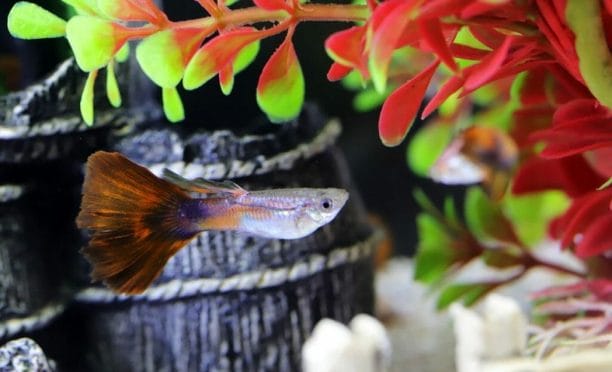
Before preparing the plastic plants for aquarium, just make sure that it is actually meant to keep in an aquarium.
How do I do that?
Usually, it is mentioned on the packaging or on the sales page (if you’re buying online) that you can keep it in aquarium.
If it is not mentioned then maybe it is not to keep in an aquarium.
Besides, you can also contact the manufacturer and ask if it is safe to keep in aquarium or not.
How do you prepare plastic plants for aquarium?
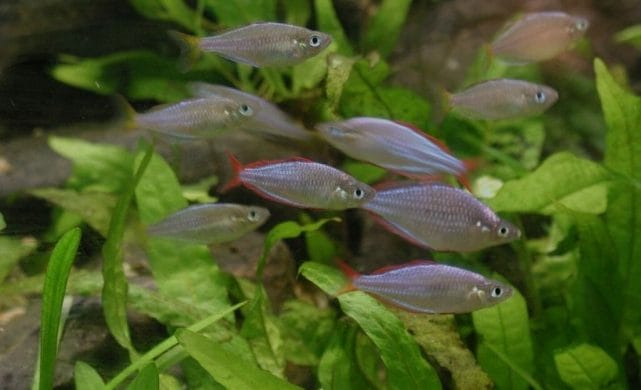
The plastic plants that are meant to use for decoration in an aquarium are safe to use in an aquarium and you don’t need to sterilize them.
You just have to clean them with water to remove dust from them.
Normal tap water contains chlorine. So if you clean the plants with normal tap water then there is a chance that chlorine will get introduced in your aquarium which can be harmful to your fish.
So, to stay on the safe side, either you can rinse the aquarium plastic aquarium plants with normal tap water (don’t use detergent or soap). And then make sure to dry it with a cloth before putting it in your aquarium.
Another thing you can do is to clean the plants with some water from your aquarium.
If you use water from your tank then there is no chance of introducing chlorine in your aquarium.
Check for exposed wires
The second thing you will need to do before putting plastic plants in your aquarium is to check if there are any exposed wires in the plant.
These exposed wires can rust in the aquarium and which can cause health issues to the inhabitants in your aquarium.
How to put plastic aquarium plants in an aquarium?
You don’t have to do any preparation other than cleaning the plastic aquarium plants with water to keep them in your tank.
Once you’ve cleaned the plants you can directly put them in your aquarium.
Precautions to take after planting the plastic aquarium plants?
Once you have planted the plastic plants in your aquarium you should keep an eye on it and regularly check it to see if the glue that holds the plant is not falling apart.
If you have aquarium fish that like to nibble on plants like goldfish then you should check for the nibbling on the leaves of the plastic plants.
If the fish in aquarium consume the plastic then it can be harmful. So in this case, you should remove the plastic plants from your aquarium and replace it with silk plants or live plants.
Tips to create natural aquascape using plastic plants
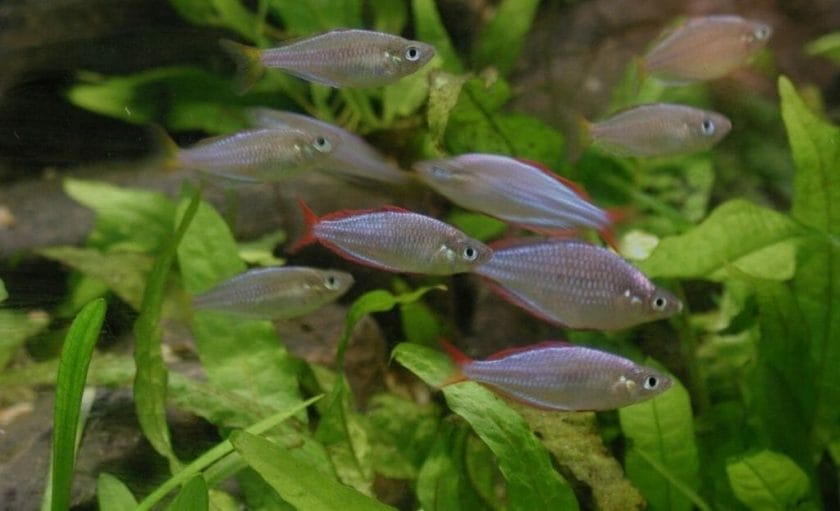
Now I will share with you some tips to create natural-looking aquascapes with plastic aquarium plants in your aquarium.
Choose different sizes
When you’re choosing plastic aquarium plants to keep in your tank, you should choose three different sizes.
Background
You should choose the plastic aquarium plants that are roughly similar to the height of your aquarium.
You should plant them in the background of your tank.
Midground plants
You should choose the plastic aquarium plants that are roughly half the height of your aquarium.
You should plant them in the midground of your tank.
Foreground aquarium plants
Foreground plants are the plants that, as the name suggests, go in the foreground of your tank.
You should avoid keeping tall plants in the foreground because it will hide the middle ground plants.
You should choose the plants that are smaller than the midground aquarium plants to keep in the foreground of your tank.
Choose plants with similar leaves structure and coloration
While choosing the plastic aquarium plants you should not choose very dissimilar plants i.e. the plants that look way off and don’t seem real.
Also, you should avoid choosing the plastic plants that have a very contrasting color like purple for your aquarium.
Ideally, you should choose the plants that have natural colors such as dark green, light green, yellow, or reddish coloration.
Note:
Remember, these tips are for natural-looking aquascapes.
If you’ve something different in your mind then you can go for it.
It’s always a good idea to be creative and create something that you’ll enjoy.
How to clean plastic aquarium plants?
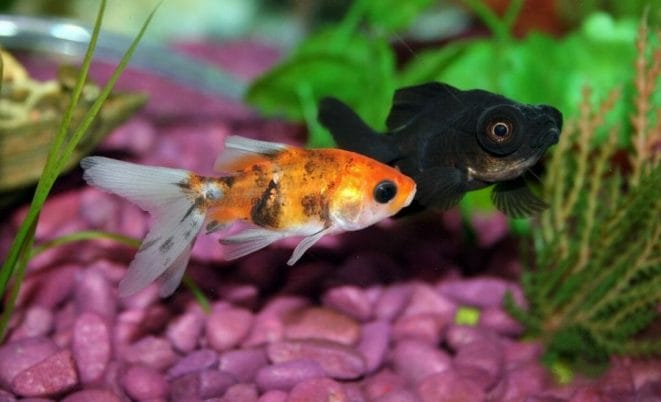
Once you’ve kept some plastic plants in your aquarium, after some time, you’ll notice that the plants will start turning darker on color. You may also notice some algae growth on them.
So you’ll have to clean them to make them look clean and attractive again.
Now there are a couple of ways to clean plastic aquarium plants and remove algae from it.
1. Boiling
This is a very simple way of cleaning plastic aquarium plants.
First of all, boil water on a stove. Then pour down the boiled water into a food-grade container that has never been in contact with any household chemicals.
Now put plastic aquarium plants into the container and let it so for 10 to 15 minutes.
Then scrub the plants and the algae will get removed from the plants.
Now pull out the plastic plants and let it cool down.
Once they are cooled down then you can put it back in your aquarium.
2. Bleach solution
Using a bleach solution to clean plastic aquarium plants is a very popular way of cleaning and removing algae from plastic aquarium plants or any ornament in your tank.
Method 1
To clean plastic plants with bleach solution take 9 parts of water and 1 part of bleach.
Just make sure you are not taking bleach more than 10% of the water.
Now let the plastic plants soak in the bleach solution for 10 to 15 minutes.
After 10 to 15 minutes, the algae deposited on the plastic aquarium plants will get removed automatically.
Now take out the plastic aquarium plants and put it in a food-grade container that never got in contact with any household chemicals.
Add some freshwater into the food-grade container.
Also add dechlorinator into the container. The dechlorinating agent will remove chlorine from the plant.
Now let the plants soak in the container for 10 to 15 minutes.
After that take out the plants and now you can plant them in your tank.
Method 2
If you are very impatient then this method is for you.
First of all, pour down boiled water in a food-grade container.
Add some bleach into the boiled water. No more than 10% of the water.
Now add plastic plants into the solution.
Then close the container and shake it well.
By now the algae deposited on the plant will come off.
Now take out the plants keep it aside.
Now clean the container with running water. And pour down some normal tap water into it.
Also, add a solution of dechlorinating agent into it.
Now add the plastic plants into the solution and let it soak for 10 minutes.
After that, your plastic aquarium plants are ready to plant in your tank.
Method 3
If you want to be extra careful then this is the method for you.
For this method, you’ll need an ultrasonic cleaner.
First of all, put your plastic plants into the ultrasonic cleaner.
Now add water into the ultrasonic cleaner.
Also, add bleach into the ultrasonic cleaner (No more than 10% of the water)
Now turn on the ultrasonic cleaner and let it run for at least 30 minutes.
Now pull out the plastic plants from the ultrasonic cleaner and put it in a food-grade container.
Fill the container with normal tap water and add dechlorinating agent into the water.
Let the plants soak in the container for 10 to 15 minutes.
Now your plants are ready to plant in your aquarium.
Best plastic aquarium plants that are safe for fish
There are a lot of plastic aquarium plant online that are actually not safe for your fish. Below is the list of plastic aquarium plants that are made from non-toxic material. And they are safe for your fish.
1. CousDUoBe plastic aquarium plants
This product comes with 11 sets of artificial plastic aquarium plants.
These 11 plants have different sizes so you can easily keep some of them in the background, some in the midground, and some in the foreground of your tank.
The color of the plant is also very pretty and vibrant. And the leaves of the plants are very attractive.
The plants are made from high-quality hard plastic and they don’t contain any metal so you don’t need to worry about rusting.
Besides, these plants have a relatively large base so you can easily plant it in your substrate.
And its solid ceramic bass doesn’t affect the quality of the water in your tank.
Before planting the plants in your tank you should soak them in clean water for at least a day.
Then let it dry and then you can plant them in your tank.
Check the price of this plastic plant at Amazon HERE
2. MyLifeUnite seaweed plastic aquarium plant
If you want to keep some artificial seaweed in your tank then this is the product for you.
Many Betta fish keepers are worried about the material of the plastic plant because Betta fish have very delicate fins. And hard plastic can scratch their fins.
These plastic aquarium plants are made from a very soft plastic material so it will not scratch your fish. You can use it in your Betta fish tank.
Besides, this plant is made from non-toxic PVC plastic material which is totally safe for your fish.
Each package comes with 10 pieces of plants. And each piece of plant has its own ceramic base.
One thing to know that when you get the plants you may notice that they are squeezed and deformed.
This can happen during packaging. So before keeping the plants in your tank, first of all, you should let it slow soak in warm water of anywhere between 100 to 140° F so it can restore its original shape.
This plastic plant has a very bright green color which looks unnatural.
Also, the bright color glows at night if you keep night light on in your aquarium.
Check the price of this plant at Amazon HERE
3. Otterly plastic aquarium plants
If you are looking for vibrant aquarium plants for your large tank (20 gallons or above) then these plastic aquarium plant set is for you.
This plant set comes with 8 different types of plastic aquarium plants.
Each plant is very different from others when it comes to size, shape, and color.
These plants are made from non-toxic material so they are totally safe for your fish.
Besides, these plans don’t contain any metal so there is no issue of rusting.
The ceramic base of this plant does not affect the water chemistry of your tank.
The unique part about its ceramic base is that you can actually remove the leaf part from the ceramic if for if you want to for cleaning purposes.
But this can also cause issue sometimes as the leafy part of some plants may come off easily in your tank.
Besides, these plants have very contrasting colors so they don’t look very natural.
Check the price of this plant at Amazon HERE
FAQ
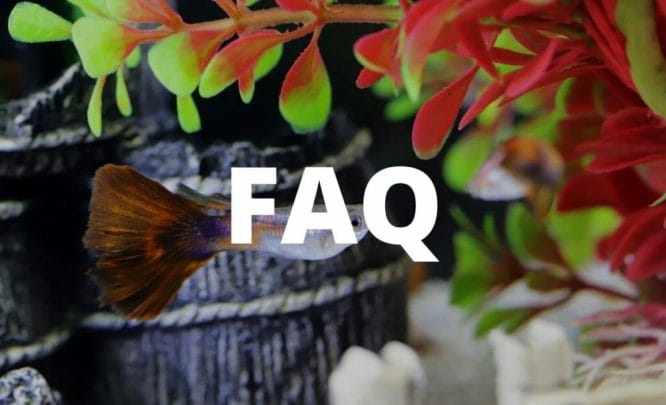
Are plastic or silk aquarium plants better?
Silk aquarium plants have some benefits or advantages over plastic aquarium plants.
- Silk aquarium plants look more natural in aquarium settings. Silk aquarium plants have soft materials so it moves in water just like a live aquarium plant.
- As plastic aquarium plants are harder than silk if a fish rush directly into the plastic aquarium plant it can get scratch. On the other hand, as silk aquarium plants are very soft, even if a fish rush into them directly, the fish will not get scratched.
- Some fish have a tendency to nibble on the plants. So if you keep plastic aquarium plants in your tank then it can hurt your fish. On the other hand, silk aquarium plant will not cause any issue.
Should I use fake or real plants in my aquarium?
Both fake and real aquarium plants have their advantages and disadvantages.
There are a lot of benefits of keeping live plants.
At the same time, you will have to give some time to take care of them in your aquarium.
And you will need to spend some money to provide the lighting and supplement them fertilizers etc.
On the other hand, fake aquarium plants don’t provide the benefits that live aquarium plants provide.
But you don’t need to give them any time to maintain and take care of them. And you don’t have to spend any extra money on the plastic aquarium plants.
So if you can give some time and spend some money then I encourage you to go for live plants.
If you don’t want to spend money or you don’t want to give any time to plants then you should go for fake plants.
52 Best Freshwater Aquarium Plants For Beginners (And Care Guide)
Are plastic plants safe for Bettas?
Plastic aquarium plants that are made from soft plastic are usually safe for Betta fish.
A good way to check if the plastic aquarium plants you have are safe for Betta fish or not is to run pantyhose over the plastic plants.
If the pantyhose get a snag or torn then it is not safe for delicate fins of Betta fish.
In this case, you should go for silk aquarium plants.
Can I boil plastic aquarium plants?
You can boil for plastic aquarium plants.
But after boiling some plastic aquarium plants can fade off.
The way around it is to clean aquarium plants with bleach solution.
20 Tips to Maintain a Healthy Aquarium
Conclusion
In a nutshell, plastic aquarium plants that are meant to keep in aquarium are totally safe for fish.
While buying plastic aquarium plants for aquarium, just make sure to have a look at the packaging and check if it’s mentioned that it is safe for aquarium ecosystem or not.
It is not mentioned on the packaging, you can contact the manufacturer to get certain about it.
I hope you found this article.
If you do, please share it.
Happy fish keeping!


